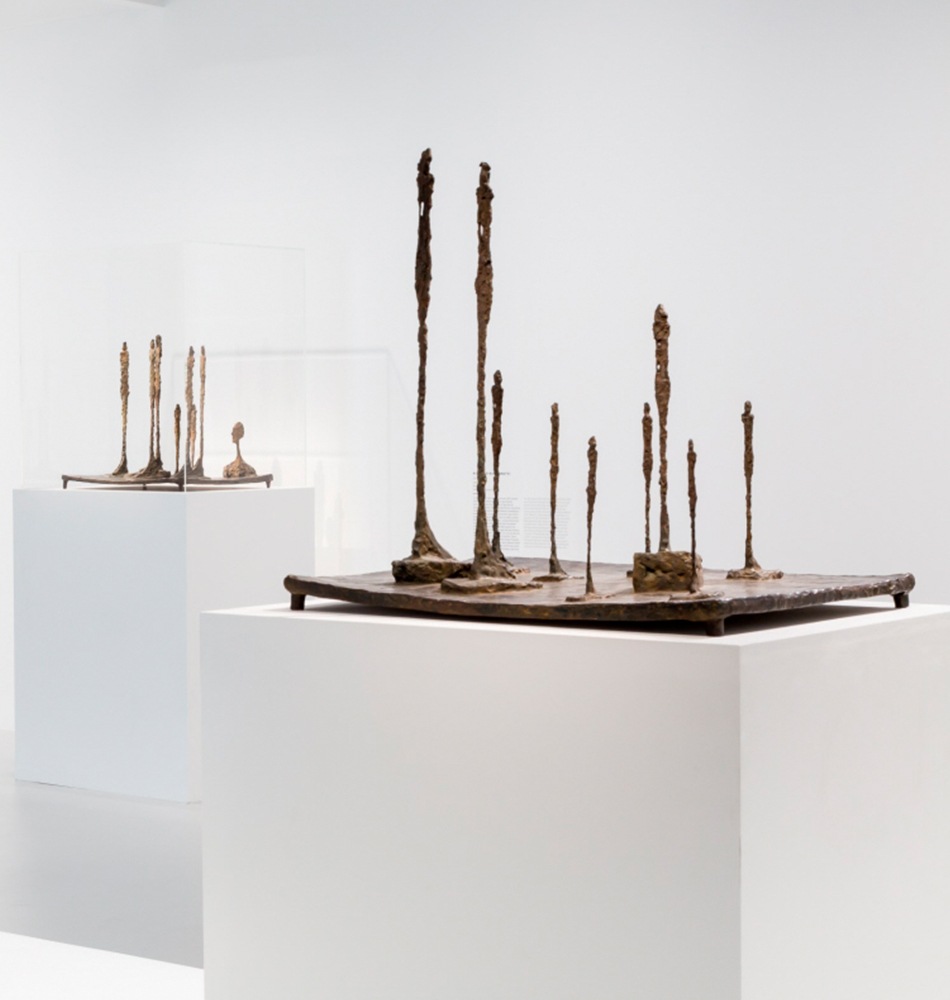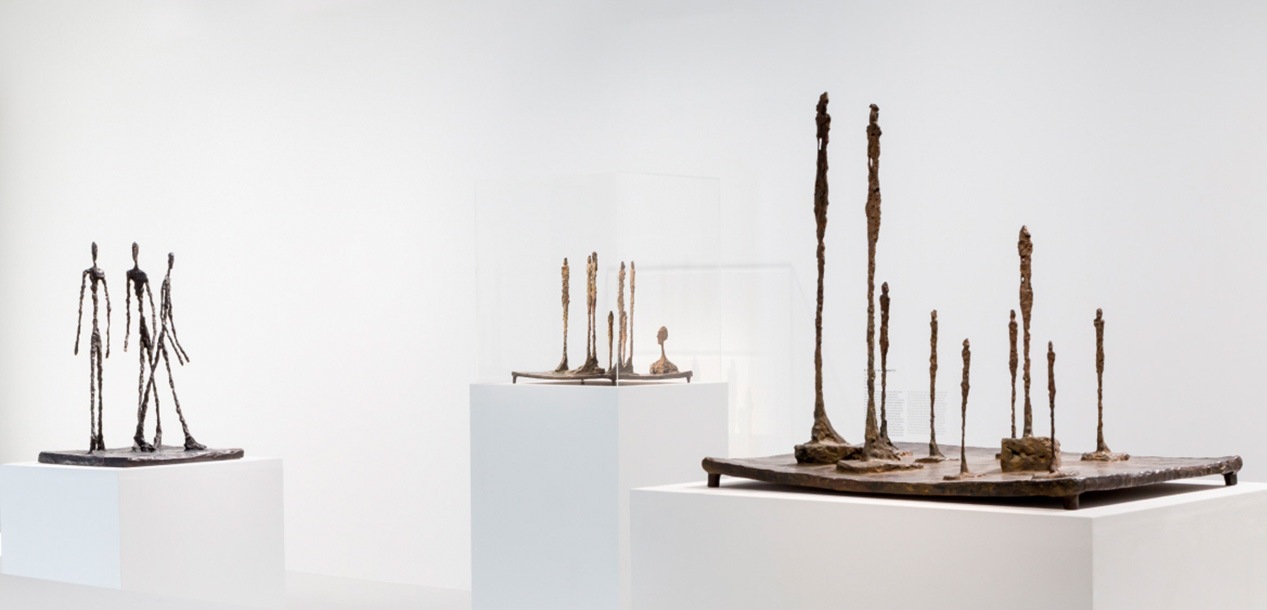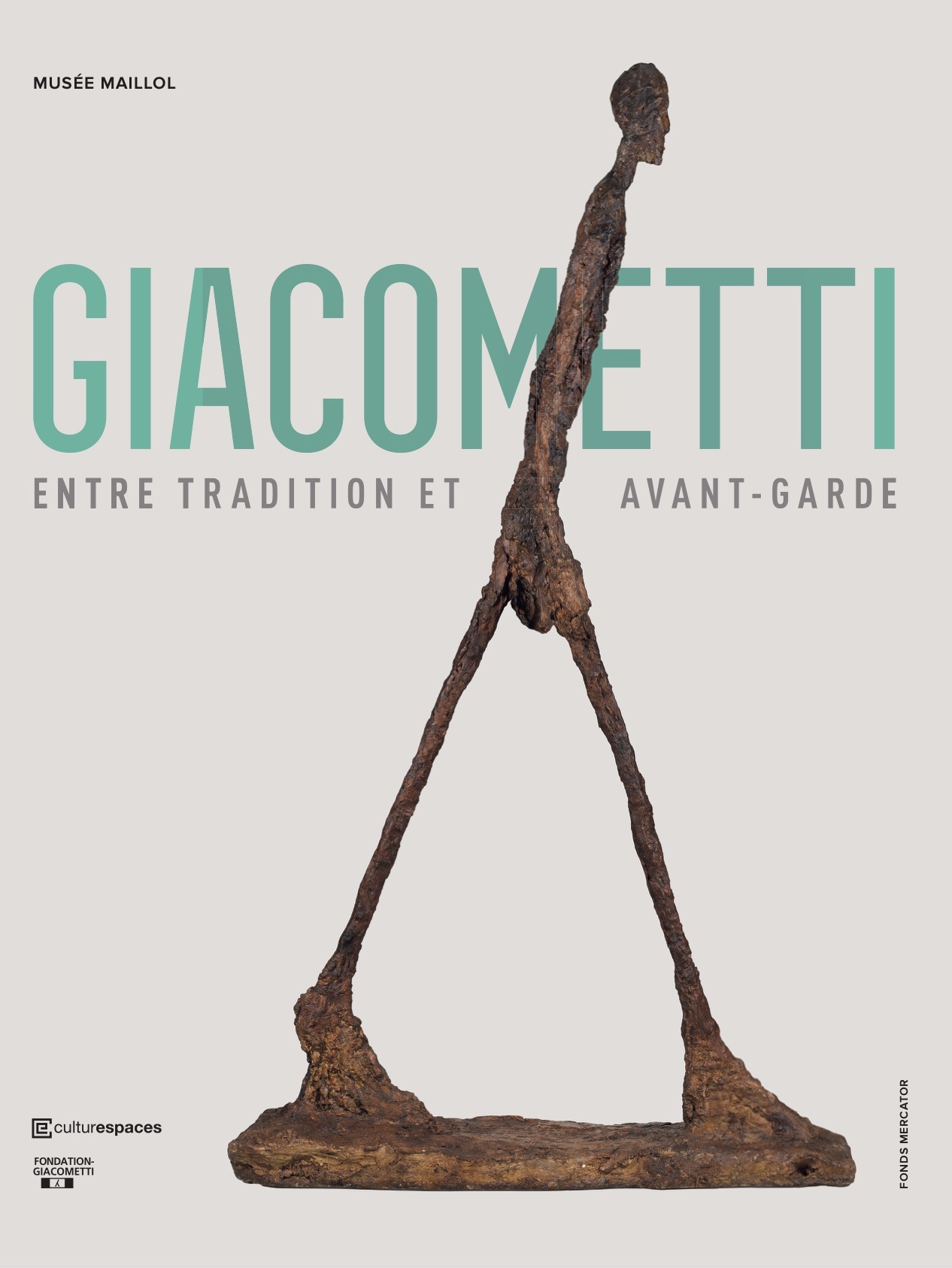En cours
A Venir
Billetterie
Collections en ligne
Actualités
Boutique
Restaurants et privatisation


Giacometti
Between tradition and avant-garde
Catherine Grenier
Thierry Pautot
In autumn 2018, the Musée Maillol honors Swiss artist Alberto Giacometti. In collaboration with the Fondation Giacometti in Paris, Musée Maillol offers a reinterpretation of Giacometti’s work in dialogue with pivotal classical and modern sculptors of his time.
The exhibition will feature more than fifty sculptures by Alberto Giacometti, all from the Fondation Giacometti collection. The works will be displayed alongside almost twenty-five works by other major artists including Rodin, Bourdelle, Maillol and Despiau, as well as Brancusi, Laurens, Lipchitz, Zadkine, Csaky and Richier.
With a chronological perspective, the exhibition will highlight the relationships with these artists at each stage in the development of Giacometti’s style.
The exhibition will shed light on the lesser known pre-war period by first presenting Giacometti’s early works, still marked by classical modernity (Despiau, Maillol), followed by a second, larger section devoted to his encounter with the Parisian avant-garde after 1925 (Zadkine, Lipchitz, Csaky).
The influence of Surrealism on the Giacometti’s move towards abstraction is highlighted by a number of comparisons (Brancusi, Laurens). Within the same exhibition, the artist’s definitive return to model-based figuration after 1935 provides an opportunity to explore the development of his mature style. Thematically, the exhibition offers a vast number of comparisons with Rodin, Bourdelle and Maillol’s works. The motif of the head, for instance, as well as the question of the pedestal, and inspiration taken from High Antiquity.
The major themes of the post-war period (groups of figures, standing women and walking men) are explored, from their Surrealist origins in Walking Woman (1932) to the iconic works of the 1950s and 1960s, such as La Clairière (1950), Woman of Venice III (1956) and Walking Man II (1960). Giacometti’s formal approach is comparable to that of a number of leading artists, in particular Rodin, and similar contemporaries such as Richier.
A selection of graphic artwork and archival documents will guide visitors though the exhibition, offering historical and formal context and to the artworks on display.
A parallel to the reconstruction of Aristide Maillol’s studio in the Musée Maillol, Giacometti’s legendary Parisian studio will be similarly replicated and displayed through a collection of lithographs by the artist and photographs taken Brassaï, Denise Colomb, Sabine Weiss and Herbert Matter, a selection of the greatest photographers of the 20th century.
In autumn 2018, the Musée Maillol honors Swiss artist Alberto Giacometti. In collaboration with the Fondation Giacometti in Paris, Musée Maillol offers a reinterpretation of Giacometti’s work in dialogue with pivotal classical and modern sculptors of his time.
The exhibition will feature more than fifty sculptures by Alberto Giacometti, all from the Fondation Giacometti collection. The works will be displayed alongside almost twenty-five works by other major artists including Rodin, Bourdelle, Maillol and Despiau, as well as Brancusi, Laurens, Lipchitz, Zadkine, Csaky and Richier.
With a chronological perspective, the exhibition will highlight the relationships with these artists at each stage in the development of Giacometti’s style.
The exhibition will shed light on the lesser known pre-war period by first presenting Giacometti’s early works, still marked by classical modernity (Despiau, Maillol), followed by a second, larger section devoted to his encounter with the Parisian avant-garde after 1925 (Zadkine, Lipchitz, Csaky).
The influence of Surrealism on the Giacometti’s move towards abstraction is highlighted by a number of comparisons (Brancusi, Laurens). Within the same exhibition, the artist’s definitive return to model-based figuration after 1935 provides an opportunity to explore the development of his mature style. Thematically, the exhibition offers a vast number of comparisons with Rodin, Bourdelle and Maillol’s works. The motif of the head, for instance, as well as the question of the pedestal, and inspiration taken from High Antiquity.
The major themes of the post-war period (groups of figures, standing women and walking men) are explored, from their Surrealist origins in Walking Woman (1932) to the iconic works of the 1950s and 1960s, such as La Clairière (1950), Woman of Venice III (1956) and Walking Man II (1960). Giacometti’s formal approach is comparable to that of a number of leading artists, in particular Rodin, and similar contemporaries such as Richier.
A selection of graphic artwork and archival documents will guide visitors though the exhibition, offering historical and formal context and to the artworks on display.
A parallel to the reconstruction of Aristide Maillol’s studio in the Musée Maillol, Giacometti’s legendary Parisian studio will be similarly replicated and displayed through a collection of lithographs by the artist and photographs taken Brassaï, Denise Colomb, Sabine Weiss and Herbert Matter, a selection of the greatest photographers of the 20th century.

Giacometti
Entre tradition et
avant-garde
In autumn 2018, the Musée Maillol honors Swiss artist Alberto Giacometti. In collaboration with the Fondation Giacometti in Paris, Musée Maillol offers a reinterpretation of Giacometti’s work in dialogue with pivotal classical and modern sculptors of his time.
The exhibition will feature more than fifty sculptures by Alberto Giacometti, all from the Fondation Giacometti collection. The works will be displayed alongside almost twenty-five works by other major artists including Rodin, Bourdelle, Maillol and Despiau, as well as Brancusi, Laurens, Lipchitz, Zadkine, Csaky and Richier.
With a chronological perspective, the exhibition will highlight the relationships with these artists at each stage in the development of Giacometti’s style.
The exhibition will shed light on the lesser known pre-war period by first presenting Giacometti’s early works, still marked by classical modernity (Despiau, Maillol), followed by a second, larger section devoted to his encounter with the Parisian avant-garde after 1925 (Zadkine, Lipchitz, Csaky).
The influence of Surrealism on the Giacometti’s move towards abstraction is highlighted by a number of comparisons (Brancusi, Laurens). Within the same exhibition, the artist’s definitive return to model-based figuration after 1935 provides an opportunity to explore the development of his mature style. Thematically, the exhibition offers a vast number of comparisons with Rodin, Bourdelle and Maillol’s works. The motif of the head, for instance, as well as the question of the pedestal, and inspiration taken from High Antiquity.
The major themes of the post-war period (groups of figures, standing women and walking men) are explored, from their Surrealist origins in Walking Woman (1932) to the iconic works of the 1950s and 1960s, such as La Clairière (1950), Woman of Venice III (1956) and Walking Man II (1960). Giacometti’s formal approach is comparable to that of a number of leading artists, in particular Rodin, and similar contemporaries such as Richier.
A selection of graphic artwork and archival documents will guide visitors though the exhibition, offering historical and formal context and to the artworks on display.
A parallel to the reconstruction of Aristide Maillol’s studio in the Musée Maillol, Giacometti’s legendary Parisian studio will be similarly replicated and displayed through a collection of lithographs by the artist and photographs taken Brassaï, Denise Colomb, Sabine Weiss and Herbert Matter, a selection of the greatest photographers of the 20th century.
Mentions légales | CGU | Données personnelles | Gestion des cookies
Musée Maillol, 2021
Mentions légales | CGU | Données personnelles | Gestion des cookies
Musée Maillol, 2021